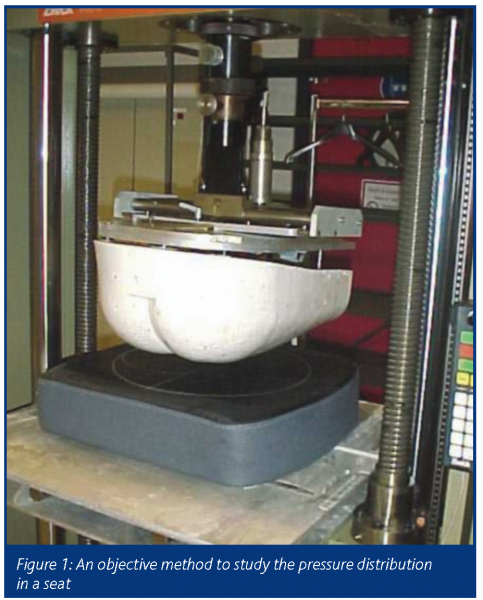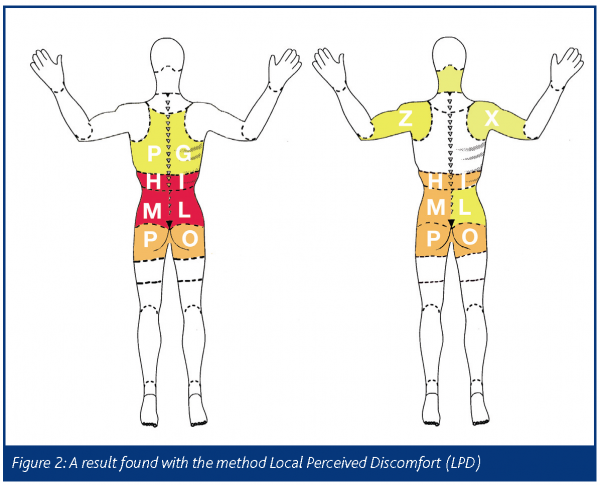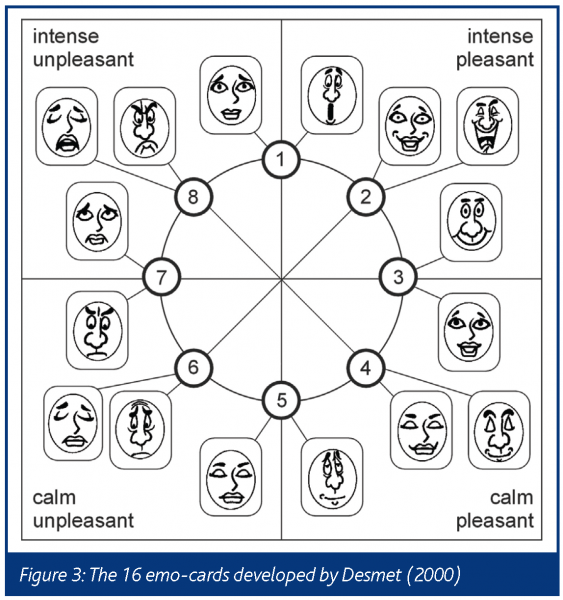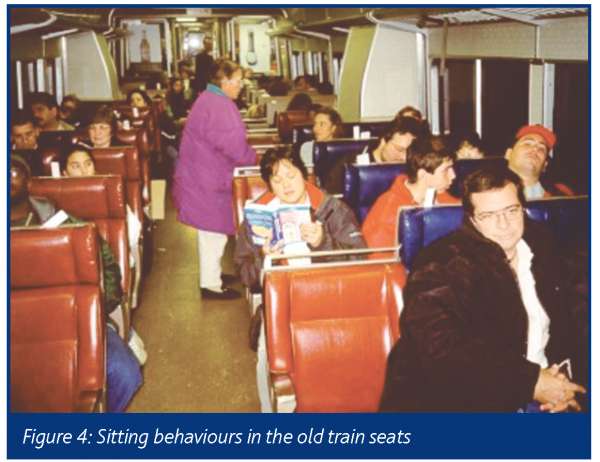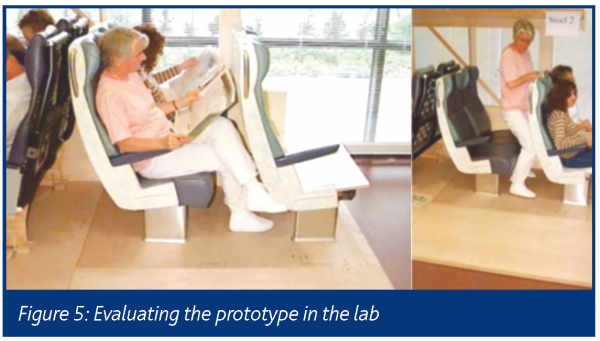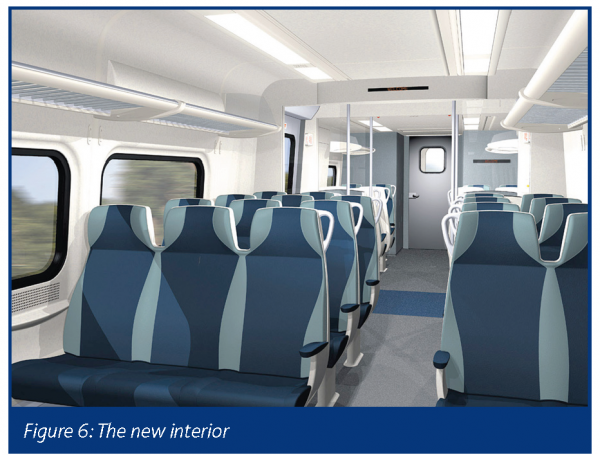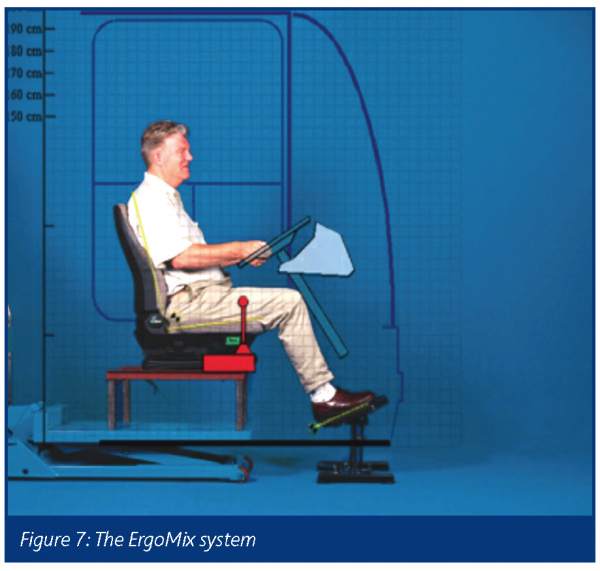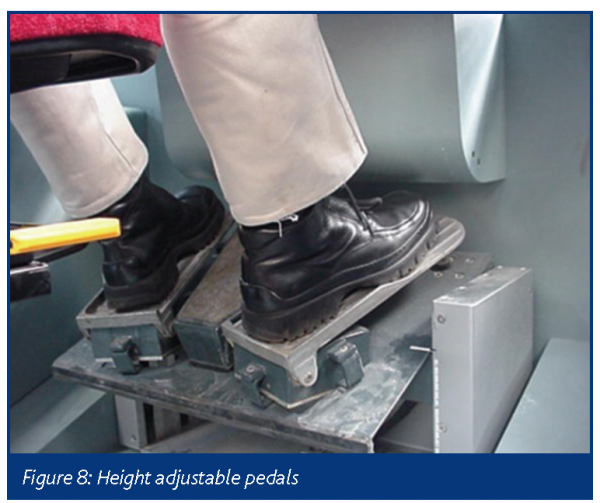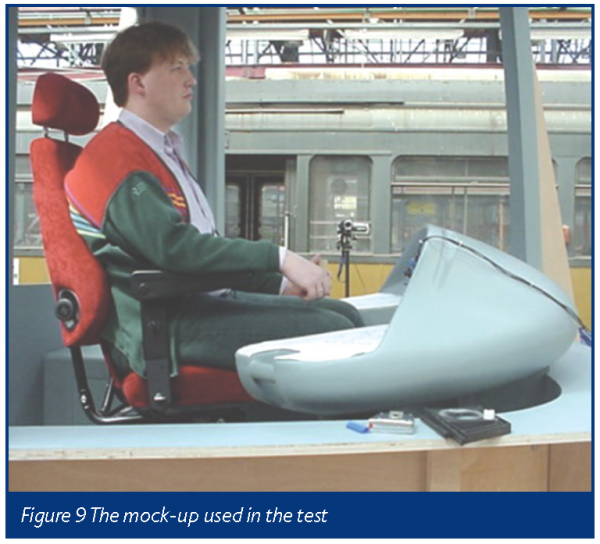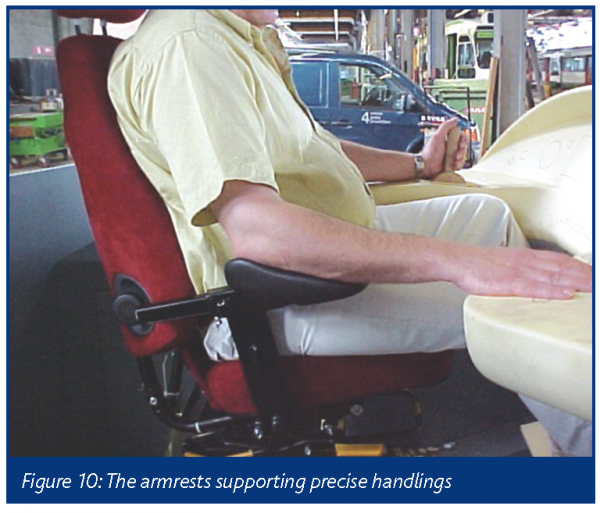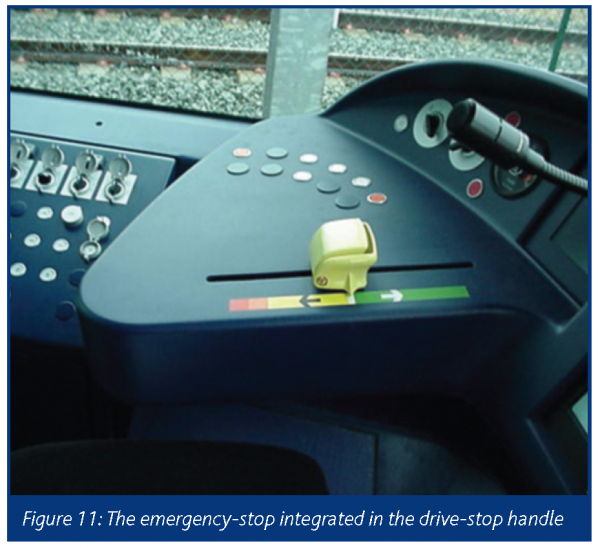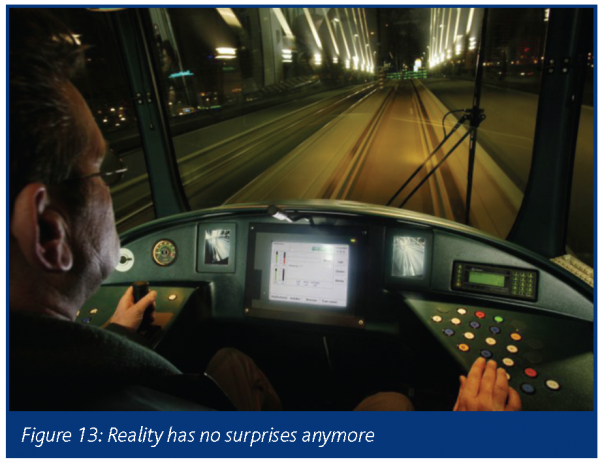Considerations for interiors of urban public transport
- Like
- Digg
- Del
- Tumblr
- VKontakte
- Buffer
- Love This
- Odnoklassniki
- Meneame
- Blogger
- Amazon
- Yahoo Mail
- Gmail
- AOL
- Newsvine
- HackerNews
- Evernote
- MySpace
- Mail.ru
- Viadeo
- Line
- Comments
- Yummly
- SMS
- Viber
- Telegram
- Subscribe
- Skype
- Facebook Messenger
- Kakao
- LiveJournal
- Yammer
- Edgar
- Fintel
- Mix
- Instapaper
- Copy Link
Posted: 6 December 2005 | Robin E. Bronkhorst MSc, TNO | No comments yet
Comfort and emotion research models have a major role to play in implementing better urban public transport interiors, helping designers identify and confirm vital improvements.These models can also be implemented to optimise the driver’s cab for a better performance.
Public transport companies looking to increase passenger traffic face a difficult task.
They can reduce the price, but this strategy is mostly not acceptable, whereas a more viable approach would be to increase the overall quality of the travel experience. Higher quality could be achieved by improving comfort or by better anticipating the emotional needs of passengers. However, it is not always easy to find out exactly what passengers define as being comfortable and emotionally satisfactory. Several experts have an opinion on comfort and emotion, but do passengers actually agree with them? In fact the end-user, the passenger, is the only one that can truly evaluate and judge the comfort and emotional values of public transport interiors.
Comfort and emotion research models have a major role to play in implementing better urban public transport interiors, helping designers identify and confirm vital improvements.These models can also be implemented to optimise the driver’s cab for a better performance. Public transport companies looking to increase passenger traffic face a difficult task. They can reduce the price, but this strategy is mostly not acceptable, whereas a more viable approach would be to increase the overall quality of the travel experience. Higher quality could be achieved by improving comfort or by better anticipating the emotional needs of passengers. However, it is not always easy to find out exactly what passengers define as being comfortable and emotionally satisfactory. Several experts have an opinion on comfort and emotion, but do passengers actually agree with them? In fact the end-user, the passenger, is the only one that can truly evaluate and judge the comfort and emotional values of public transport interiors.
Comfort and emotion research models have a major role to play in implementing better urban public transport interiors, helping designers identify and confirm vital improvements.These models can also be implemented to optimise the driver’s cab for a better performance.
Public transport companies looking to increase passenger traffic face a difficult task.
They can reduce the price, but this strategy is mostly not acceptable, whereas a more viable approach would be to increase the overall quality of the travel experience. Higher quality could be achieved by improving comfort or by better anticipating the emotional needs of passengers. However, it is not always easy to find out exactly what passengers define as being comfortable and emotionally satisfactory. Several experts have an opinion on comfort and emotion, but do passengers actually agree with them? In fact the end-user, the passenger, is the only one that can truly evaluate and judge the comfort and emotional values of public transport interiors.
Apart from passengers, the driver’s cab should also meet the driver’s needs. The cab should be comfortable for small, long, slim and corpulent drivers, and should stimulate safe driving as well as good vision and clearance. In addition, it is essential to adapt a driver’s cab to human behaviour to enable optimal human performance. Nowadays, many software packages are available to support ergonomical design. These ergonomical designs are needed to allow drivers to fit in the vehicle and check sight lines and reach envelopes. These software packages are especially useful in an early stage of development. However, it is impossible to predict both human behaviour and the feeling of comfort. Therefore, in a later stage of design, participation of various drivers (real users, because they know the driver’s work best) will always be needed to test the handling, view and comfort.
After more than ten years of research,TNO have finally developed methods to study end-user opinion more objectively, allowing the results to then be used in more effective cabin (re) design, driver’s cab (re) design and marketing.
Unsurprisingly, the amount of attention being paid to issues surrounding comfort and emotion is growing. Obviously, products need to be designed to ensure they do not result in health problems or discomfort. Think of drivers who spend long working hours on the same seat in the same cab or equally unsatisfied passengers. Overall, the aim should be to devise products that are comfortable and emotionally satisfying.
Discomfort and health
Discomfort is a predictor of back and neck complaints (Vink, 2002). Based on an extensive literature survey, Buckle & Devereux (2002) state that there is strong evidence that a long exposure to static postures can result in neck/shoulder problems. It has also been demonstrated that prolonged sitting constitutes a potential risk factor for the development of low-back pain (Hales & Bernard, 1996). In practice it has been attempted to ameliorate this problem by means of optimising seat design to facilitate optimal posture and movement possibilities. The positive health effects of these design efforts have been assumed for many years. It is only recently that positive health effects related to better design have been proven (Dieën et al., 2002). It’s fair to conclude that preventing discomfort is not a luxurious activity, but is prerequisite for preventing basic health problems.
Comfort
According to scientific literature, comfort is ‘a pleasant state of physiological, psychological and physical harmony between a human being and its environment or a sense of subjective well-being’.According to Looze et al (2002) there are many definitions, but all agree upon one matter: comfort is a subjective experience.A product in itself can never be comfortable. It becomes comfortable (or not) in its use. The user decides whether or not a product is comfortable. Comfort is related to luxury, safety, refreshment, well-being and relaxation (Zhang et al., 1996). Obviously, attention to comfort could help in attracting more passengers. For drivers comfort is also an essential element for more than one reason. Firstly, a healthy environment results in drivers that are less ill and improve their performance.Another reason is that it can help the driver to be more alert during the shift without becoming distracted or tired by discomfort. This will, therefore, improve safety. Lastly, today’s drivers are used to the high level of comfort in their private cars or at home and expect the same standards at work.
Emotion
According to Pine & Gilmore (1999), an escape should be offered from the all-too-easy practice of competing on the basis of price.After all, on St. Mark’s Square in Venice, tourists are willing to pay more than five Euros for a cup of coffee; and in Las Vegas, as well as in many amusement parks, we are prepared to pay simply for an experience. Pine & Gilmore call it the ‘experience economy’. So, an emotional experience has a value of its own and we can earn money from that.Also, on a more simple level, emotional reactions are useful for marketing purposes.
Sales of Mazda MX-5 cars were significantly higher because end-user (drivers) emotions were used as input for the design of the new car (Nagamachi, 1998). So, why not use emotional reactions in the design of public transport interiors to improve passenger and driver satisfaction?
Measuring discomfort and emotion
Several methods are now available to study comfort and emotion. Some are more objective (pressure distribution measurement systems, as seen in Figure 1) and some are more subjective (questionnaires). Essentially, comfort is a subjective phenomenon. The following two methods have proved particularly useful in studying comfort and emotion.
Discomfort
A successful procedure for studying discomfort is the ‘local perceived discomfort’ (LPD) method. Subjects (passengers or drivers) are trained to feel their discomfort and rate it on a scale from 0-10 per body part (Figure 2). The ratings have to be written on a body map.After sitting for a certain period on a seat or working for a certain period in a cab, a rating can be given. The system only works with more than eight subjects and it is only possible to compare differences between seats or cab’s within one subject (Grinten, 1992).
Emotion
As previously stated, emotional design is very important. Manufacturers of products and machines have acknowledged this fact, which was also discussed at length at the Affective Human Factors Design Conference (Helander et al., 2001). Unfortunately, most available methods to study end-user emotions are very difficult and time consuming. For example, Kansei engineering is a worthwhile method to study emotional reactions (Nagamachi, 1998), but complex to handle. The Delft University of Technology has therefore developed a more simple method using emo-cards (Figure 3). This system uses 16 cards that show faces with varying emotions. A passenger is asked to choose the card that best fits with their emotion on seeing the product (seat or complete interior) or a precursor of the product in drawing form. Firstly, end-users define what the ideal emotion is for a seat or interior with the cards. Then several interiors are rated and the best can then be chosen or redesigned.
Such comfort and emotion studies were recently used to improve a commuter train seat (Bronkhorst & Krause, 2002) and a tram driver’s cab (Osinga & Becker, 2004). This methodology can be used in various means of public transportation and is definitely not limited to tram or train transport. In two case studies we give some more insight on how the design process was carried out.
Case study 1: commuter train seat
TNO invited end-users to participate in the design of seats for new commuter trains to serve New York. The project was focused on improving comfort from the very start; beginning with an evaluation of the commuter’s sitting behaviour. This involved subjects testing the seats in various phases of the design process. To start, some 1,500 passengers were observed to study their activities (Figure 4), posture, size and movements.Also, observations of the way passengers got in and out of the rows and how they sat while reading, talking, sleeping and working were made. Based on the observed sitting behaviour, three tasks (reading, talking, sleeping), with their typical related postures, were studied in the laboratory. In this test, 18 subjects evaluated existing seats. Under controlled conditions, they sat for one hour during which specific postures observed in the commuter behaviour study had to be maintained. Data was collected using video and questionnaires (local perceived discomfort, preferences and opinions). The tests resulted in various redesign proposals concerning seat angles, lumbar support, headrest and hip-to-knee space. Modifications were made to the existing seats and tested again using the same methods. Finally, the manufacturer built prototypes based on the detailed redesign recommendations.
This improved seat design was then tested against a benchmark seat, which was defined as ‘good’ by the manufacturer. This prototype was then tested by 18 test subjects in a paired comparison experiment against the benchmark using methods described above. (Figure 5) The results showed that 83 per cent of the subjects preferred the new seat for 1-2 hours of commuting. The seat scored better on features such as resting and sleeping, leg stretching and ingress/egress.When analysing a questionnaire on emotion, there were no major differences to be found. This emotion test was repeated in a later phase to define colours and seam lines. All together, the American commuter helped to build a very comfortable seat scoring significantly higher marks for overall comfort compared to the existing seat. (Figure 6)
The methods used appeared to be useful, especially, the ‘local postural discomfort’ procedure, however, the method of asking passengers about their emotion was not so successful. In later experiments, the emo-cards were used and proved to have better results. In a separate seat project that involved both methods (LPD and emo-cards), we have been able to define which elements of the seats contribute especially to comfort, discomfort and emotional experience. The aspects of the seats and the interior that scored a positive experience with the passengers can be defined through these methods. This is useful, because the results are fed into the new design and marketing campaigns.
Case study 2: tram drivers’ cab
The public transport enterprise of Rotterdam RET (Rotterdamse Elektrische Tram) ordered new trams from Alstom (France). TNO was commissioned to create the driver’s cab in this tram as a work place that enables optimal driver’s performance. The project consisted of five design steps.
Step 1: test first design
In the first step designers of Alstom made drawings of the cab interior based on the requirements. In the labs of TNO, these drawings were analysed in the ErgoMix. (Figure 7) Through this method we can project test drivers into the drawing in order to check dimensions and sight lines. Discussion on the first analysis resulted in some changes. Climate control was hardly possible in the proposed interior, as the airflow is hindered because of the large dashboard. More importantly, by drawing sight lines in the ErgoMix it was shown that the sight was reduced, because of the large dashboards leading to smaller drivers not having a good view of the traffic. The position of displays and controls could also be improved.
Step 2: test first mock-up
Based on the results of step 1, the project group decided to make a new design based on others available for this tram. This design consisted of adapted controls and displays and a more round surface of the dashboard enabling a better sight. Another adaptation was the addition of height adjustable pedals (Figure 8 ) next to the height adjustable seats.
This is relatively new in trams. To enable good traffic sight for drivers of different lengths and height, adjustable seats are often found and sometimes even height adjustable dashboards. Height adjustable pedals, however, are not often found. The advantage of height adjustable pedals is that the sight lines of the persons relative to the dashboard and the coachwork can be fixed independently of the anthropometrics of the driver. This design was shown in a mock-up (Figure 9), which was evaluated by eight drivers in four sessions using a protocol set-up by TNO. To test the adjustability, drivers with extreme body characteristics were used. Three seats that were chosen based on previous tests (two new seats and one used in the current tram) were tested in the mock-up. The height adjustability of seats and pedals were evaluated positive. Traffic close to the tram could be observed during a simulation.
New problems were also discovered during the test. The knee space was theoretically (and in software) enough, but the real driver’s behaviour showed that knee space was too small. Based on discussions it was decided to make the dashboard more U-shaped to create space in front of the driver.Another problem was the fact that for precision handling and steering an armrest was preferable. It was decided to add an adjustable arm support for the right arm and a fix wrist support for the left hand (Figure 10).
Step 3: test improved mock-up and emergency handle
In the third step, six drivers evaluated the U-shaped mock-up and chose this design. Further refinements were then made, such as the positioning of the controls and displays, the instructor’s seat and a sunblind. In this step the emergencybreak was also tested.Alstom could deliver a new emergency brake integrated in the drive-stop handle (see Figure 11). Drivers tested the new system in an existing tram and based on the test, the old system was preferred by drivers as well as by the experts, because of the armload. Therefore, the old system will be built in the new tram.
Step 4: dynamic test of seats
In order to choose the right seat, a dynamic evaluation took place of three seats in an existing comparable tram. Drivers according to a fixed protocol tested all three seats and objective tests were carried out for vibration and pressure distribution.Analysis of these tests showed that one of the seats did not provide enough support in lateral direction and did not damp the vibration enough.Another seat was the best, but improvements were needed, such as adjustment of the armrests to provide more support, a more flat front of the seat and a better pressure distribution characteristic.
Step 5: final evaluation
In the last step, a complete mock-up was evaluated consisting of a part of the passenger cabin and the chosen colours, light, pictograms of displays and tested complete. Emotional methodology was used and some details were adapted, but the total concept was evaluated positively. (Figure 12) The new tram (Figure 13) is now a couple of months into service and the tram drivers are experiencing a comfortable cab. Most importantly, the drivers have a good view of traffic, making the cab safer.
